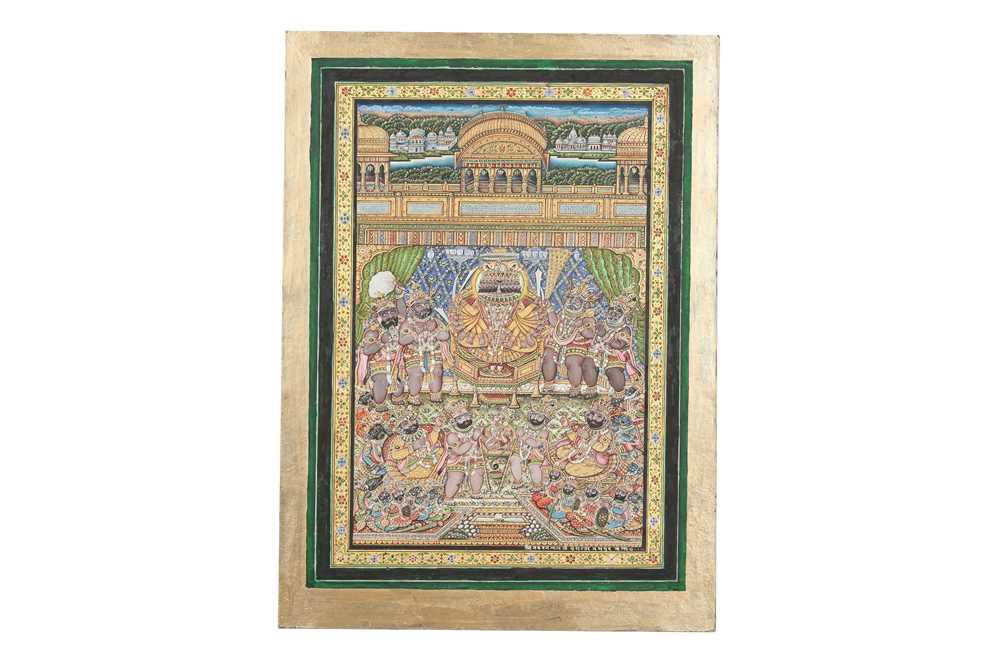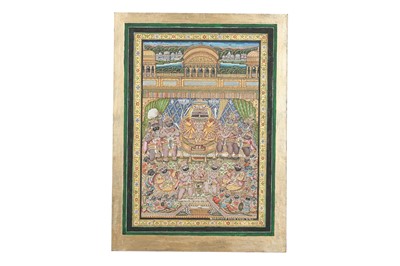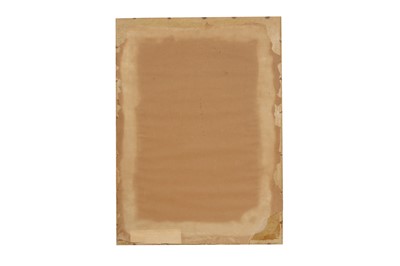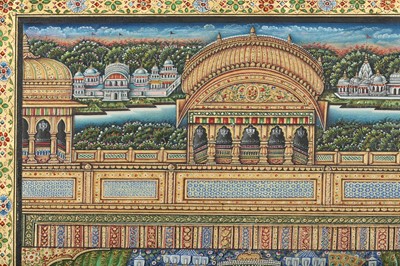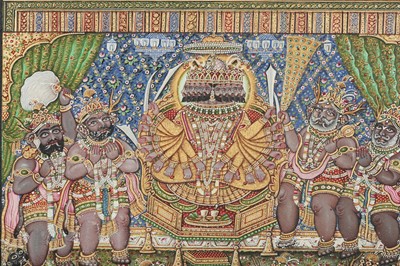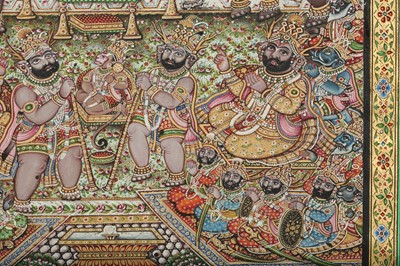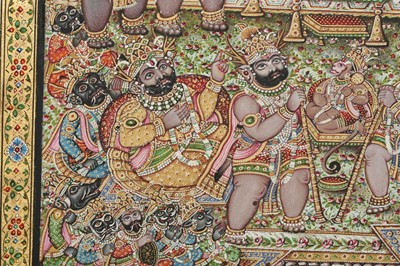16th Jul, 2021 12:00
Islamic & Indian Paintings: The Dexter Collection Part II
AN ILLUSTRATION TO A RAMAYANA SERIES: HANUMAN BEFORE THE EVIL KING OF LANKA RAVANA
Jaipur, Rajasthan, North-Western India, circa 1920 - 1940, signed by Sri Makwan Lalji
AN ILLUSTRATION TO A RAMAYANA SERIES: HANUMAN BEFORE THE EVIL KING OF LANKA RAVANA
Jaipur, Rajasthan, North-Western India, circa 1920 - 1940, signed by Sri Makwan Lalji
Opaque pigments and gold on paper pasted on thick cardboard, the large vertical composition depicting the Monkey God Hanuman before the ten-faced evil king of Lanka, Ravana, surrounded by his demon subjects with large sharp fangs, antlers and some with animal faces, all gathered in Ravana's Golden Palace in Lanka, the king depicted with twenty arms holding five tall swords and two red flowers, flanked by two pairs of demons with a fly-whisk and a peacock feather fan, the depiction a triumph of gold and miniature work, not a single space left plain in a form of Indian horror vacui, the scene set within concentric frames including a polychrome-painted floral border and another in black between green rules, signed Makwan Lalji in white ink on the lower right corner, 57.8cm x 42cm.
This large composition depicts a crucial moment of the fifth chapter (kanda) of Valmiki's Ramayana, the trial of Hanuman at the court of Ravana. The Sundara Kanda (5), considered by many the heart of Valmiki's text, provides detailed accounts of Hanuman's adventures, including his meeting with Sita and Ravana in Lanka. After attempting to liberate Sita, Hanuman brings chaos to Lanka, destroying buildings and killing some of Ravana's guards. He gets captured and is brought in the presence of Ravana, who condemns him and orders his subjects to set Hanuman's tail on fire. Eventually, Hanuman manages to escape and with a giant leap leaves Lanka, safely returning to Kishkindhaa. There he reports all that he learnt and saw in Lanka to Rama and King Sugriva, which leads to the famous epic battle between Rama and Ravana's army.
The cultural resonance and bond with scenes like the one depicted here are so long-lasting in the Indian tradition that even in the first half of the 20th century, major painters and workshops would produce large illustrations from the main Hindu epics and texts, like the Ramayana and the Bhagavata Purana, despite the strong post-Mughal Muslim presence in the Subcontinent.
Dimensions: 57.8cm x 42cm
Sold for £1,625
Includes Buyer's Premium
Do you have an item similar to the item above? If so please click the link below to request a free online valuation through our website.
